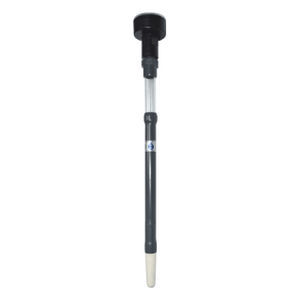
Real-time soil sampler X1006water potentialconnected
Add to favorites
Compare this product
Characteristics
- Mobility
- real-time
- Other characteristics
- water potential, connected
Description
It is a simple device with which we can pump out of the plant roots zone a sample of soil solution. The soil water consists of most of the dissolved nutrients, as well as salt that may accumulate, or be missing, in the soil. The user can analyze the sampled water content throughout the growing period.
The Soil Water Sampler consists of the following parts:
• a body made of a PVC pipe, with different optional lengths.
• A porous ceramic tip at the low edge.
• A rubber stopper on top with a plastic tube running through the body and inserted in the ceramic cap.
• A small, 3 way plastic valve connected to the tube at one side, and to a plastic syringe at the other side, with a free outlet to collect the water.
Operation Principles:
• The cermic tip is inserted, in a place and depth where the plant roots are mostly active.
• By pulling the plastic syringe a vacuum power is created within the device. We "trap" the vacuum inside by switching the 3 way valve to the right position.
• Within a few hours (about 4-8) the soil solution is sucked into the sampler and then we can pump the fluid into the syringe, and from there to container, from which the farmer can analyze the water or send it to a lab.
When shall we activate the device?
It is Generally recommended to activate the soil water sampler soon after watering, when the soil is in Field Capacity. The saturation process may take a short or long time depending on a few factors, such as the sampled depth or type of soil. It is useful to consult a local agronomist. A few hours after activation we may return to the device and pump out the sampled water.
Catalogs
Soil Water Samplers
2 Pages
Related Searches
*Prices are pre-tax. They exclude delivery charges and customs duties and do not include additional charges for installation or activation options. Prices are indicative only and may vary by country, with changes to the cost of raw materials and exchange rates.





